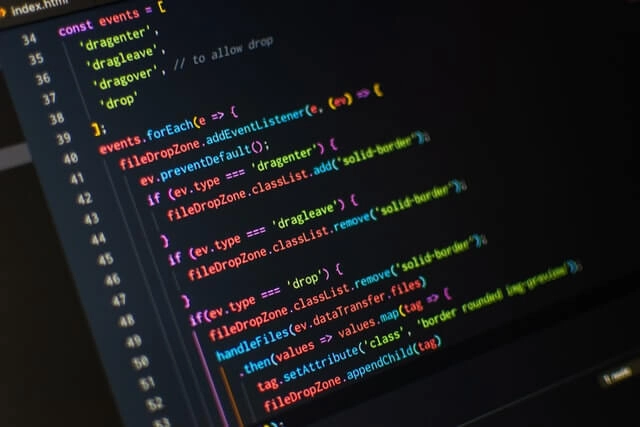How many programming languages do you need to know as a developer? The main reason for this question is that most newbies see a lot of developers out knowing multiple languages or technologies, and that is the image they associate with when someone talks about a software engineer or any developer in tech. In this article, I am going to try and give my view on the subject with the hope that you will find it helpful and informative.
Now I want to start by saying that this is a very subjective topic. If you ask different software engineers, you are probably going to get a lot of different answers, and it is hard and virtually impossible for me to give an actual number on how many languages you should know. Why? There are a lot of different reasons why someone would choose to go with a specific language or a specific number of languages. Rather than me focusing on telling you to learn, say, five or six programming languages, I am going to focus on the type of programming languages that you should know and what you will gain in terms of knowledge of computer science fundamentals from learning those programming languages.
. . .
Before going into the types, I think it makes sense to discuss why you might want to learn multiple programming languages, even if you are not planning on using them to build applications or work on projects. Simply put, it makes you a better and more well-rounded programmer. I find that you learn more about programming when you learn different languages. There is no way to learn everything about programming from one or two programming languages or languages of the same type. It is valuable to learn different types of programming languages because they introduce new concepts and new features that you may not have seen before.
Another big reason is that it allows you to have a lot of tools under your belt and be able to make a better judgment about what language or technologies to use for a specific project. After all, programming languages are just tools used to accomplish a task. Ideally, you want to use the best tool for the job, and if you only know one or two programming languages, you might not even know that there is a better option out there for what you are trying to do.
. . .
There are two main categories of programming paradigms, and I am pretty sure all programming languages fall within these categories. We have either imperative programming languages or declarative programming languages. Of course, there are more specific categories within those, but first, I will explain the two main categories. An imperative programming paradigm is one in which we tell the computer how to come up with a solution. The important concept in this type of programming paradigm is how to design an algorithm in the process of finding the solution to a problem.
A declarative programming paradigm entails stating facts, asking questions, and having the computer come up with a solution for us. In this type of programming, we are less concerned with how we got that solution but more concerned with if the solution is correct and what do we need as inputs such that it gives us that correct solution. A good example of declarative programming would be something like SQL. You do not describe how you are going to come up with the query. You need only type it out, and the computer gives it to you.
. . .
Programming Paradigms Within the Context of Imperative Programming
The main paradigms that belong to imperative programming are object-oriented and procedural programming. There are a few others as well. There are many different programming paradigms, but these are, kind of, the main ones. It is worth noting that some languages implement multiple paradigms. For example, Python implements both the object-oriented paradigm, as well as the procedural paradigm.
When you look at the object-oriented programming paradigm, you will notice that the idea is to represent the program as a collection of objects that store their internal data and have external accessing parts like a method. Object-oriented programming languages use principles like encapsulation, inheritance, polymorphism, and so on.
Advantages
- Features like inheritance can reduce redundancy and allow the same functionality to be used in multiple classes without having to rewrite it.
- Programs are typically easy to maintain.
- Code is easily reusable.
- Some security benefits can be achieved through data abstraction that you cannot get in some other programming paradigms.
Disadvantages
- The size of your programs will be quite large.
- It takes a lot more effort to design and create programs using this paradigm. This has to do with its complexity, in general, and the larger amount of code that you need to write it.
- The speed of programs created using said paradigm is usually fairly slow compared to programs built in something like functional programming or procedural.
When you look at procedural programming, you will notice that languages in said paradigm execute a sequence of procedures, which are usually called routines or sub-routines. In case you do not know, a routine or subroutine is simply a series of computational steps that need to be carried out in a specific order. Procedural languages usually rely on block and scope. You will see keywords like if, for, while, e.t.c and these are used to implement the control flow of the program.
Advantages
- They do not require much memory to run.
- They also work well with interpreters and compilers.
- They have a simple structure and require a minimum amount of code.
Disadvantages
- They do not protect Data very well.
- Error catching and debugging is pretty difficult.
- A deeper knowledge of the language and computer instructions is required to write in a procedural language.
At this point, I have covered two main paradigms within the field of imperative programming. Again, the point of this is only to give you an idea of how programming languages differ, and again, why you may want to learn programming languages that are from different paradigms in that there are different concepts, advantages, and disadvantages to them.
. . .
Programming Paradigms Within the Context of Declarative Programming
Now within the field of declarative programming, there are three main paradigms, which are logic, functional, and database. To avoid repeating myself, I am only going to cover functional and logic paradigms. The database paradigm language would be something like SQL, and you can probably imagine why that would be a declarative programming language based on the explanations I gave previously.
Logic
The logic paradigm is based on formal logic and, essentially, lines that state a fact or rule about some domain. When you want to solve a problem, you ask questions or write queries that return results about the facts that you have declared. Logic programming allows you to express knowledge in a way that does not depend on the implementation. This means that you are not really telling the computer how to solve it but simply giving it a problem you want it to solve.
Advantages
- Facts or information is separated from how it is used i.e separated from the implementation.
- It is useful for non-computational disciplines.
- It is very efficient at proving the correctness of solutions.
Disadvantages
- It is not easy to learn or use.
- It serves a specific purpose that is not appropriate for many of the tasks that you want to achieve.
Functional
Functional programming avoids shared data, state, and any side effects using only pure functions that return values rather than modifying the state of a program. This means that functional languages rely heavily on recursion and the passing around of functions as arguments and return values. This paradigm evolved from Lambda calculus and is implemented in some popular languages like Lisp, Scheme, Scala, and even R.
Advantages
- Pure functions always return the same result for the same input, making them easier to test, easier to debug, and easier to comprehend.
- Functional programming also makes parallel processing and concurrent programming much easier.
Disadvantages
- It is hard to represent or implement some notion of state.
- Recursion is used almost anywhere, which means that there are no standard loops and a lot of people do not like that.
. . .
The main goal of this article was to share these four paradigms and to illustrate that there are many different programming languages, each with a lot of unique features and use cases. Yes, some of the languages within some paradigms are outdated, and you probably will not want to use them. That does not mean that there is no value in experimenting with them for a few hours. I will leave you with a few languages that you could learn that cover those paradigms. I am not necessarily recommending that you learn all of these. I am simply trying to give you an idea of some languages that are in those paradigms that, I think, have some value in at least looking into.
Starting with some older programming languages, Scheme and Prolog are first in line, not that I would ever use them in any real-life project. I, however, think that learning the concepts of how the languages work can be beneficial. If you are looking to get into more modern programming languages that cover some of these paradigms, I would recommend learning Python or JavaScript. They are both scripting languages, and they are both dynamically typed. So, that already gives you a good introduction to a specific type of programming language that you can do a lot of projects in.
I would also recommend learning Java because it is a strongly typed language. It is also an object-oriented programming language, and it teaches you a lot about object-oriented design, good programming habits, and ways of writing production-level code that you might not get in, say, Python or JavaScript. My last recommendation would be to learn C or C++ because they are lower-level programming languages. In C and C++, you would need to use things like pointers, you would need to learn about memory management, and there would be a lot of programming concepts that you may not have seen in languages like Java, Python, or JavaScript.
. . .
Again, these are my thoughts and recommendations. There are a lot of other paradigms out there. The ones I have mentioned in this article are the main ones people use. You can do more research before deciding on the ones to learn. You do not have to learn all of them at once. Programming is not going anywhere. You have a lot of time to stretch yourself as a developer.


